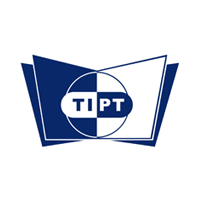
Gene editing is the process of artificially modifying an organism’s DNA by removing a piece of the DNA and replacing it with new genetic material. This form of genetic engineering has the potential to provide enormous benefits, including treating genetic disorders, improving crop yields, and controlling the spread of disease. However, gene editing also comes with significant risks, such as potentially spreading dangerous genetic mutations.
Since the risks and benefits of gene editing are both extremely high, quality assurance for this evolving technology is an important area of concern to scientists, officials, and the public.
If you’re considering quality assurance training, or have already begun your program, read on to learn more about quality assurance for gene editing.
Quality Assurance Regulations Differ for Somatic and Germline Gene Editing
In humans, gene editing is divided into somatic genetic engineering and germline engineering. Somatic genetic engineering involves editing genes in cells that are not sperm or egg cells. Germline engineering, on the other hand, involves editing genes in sperm, egg, or early embryonic cells. The key difference between somatic and germline engineering is that somatic engineering is not inheritable, whereas germline engineering is.

Once you’ve completed your quality assurance training, you’ll be aware that the quality assurance and quality control standards for germline engineering are far stricter than for somatic engineering. This is because if a gene is edited incorrectly or leads to an unintended mutation, the consequences of that error are much more serious if that gene can be inherited by any offspring. For example, if scientists attempted to modify a gene in a human but, in doing so, inadvertently turned off a gene that limits tumour growth, clearly it is best if that mutation be non-inheritable.
Professionals with Quality Assurance Training Should Know Different Regulations
After completing a quality assurance diploma, your career as a quality assurance professional will likely involve ensuring the company you work for is compliant with government regulations, including, potentially, for gene editing. Regulations surrounding gene editing vary widely across the world and they are changing frequently. In fact, even within certain countries, regulations vary depending on how the gene editing is used. When it comes to gene editing agricultural plants, for example, the EU subjects the process to stringent regulations, whereas the US takes a largely hands-off approach. Canada, meanwhile, has adopted an approach that is somewhere in the middle.
However, in terms of human gene editing, Canadian regulations are quite stringent compared to most other countries. The 2004 Assisted Human Reproduction Act makes it illegal to edit the human genome in any way that that genome could be inherited. In other words, the law completely bans germline engineering in Canada (although it does permit somatic genetic engineering). That ban has proven controversial with many scientists who say it holds back Canadian research into gene editing’s potential health benefits. Some scientists even argue that it violates the UN’s Universal Declaration of Human Rights because it prevents Canadians from exercising their right to benefit from scientific progress.
Other countries, such as the UK, France, and China, have taken a more regulatory approach to germline engineering rather than banning it outright. Gene editing is still an experimental technology, so it is likely that Canadian laws and regulations will change as the technology becomes safer and more widely understood.

Scientists are Developing Tools to Improve the Quality of Gene Editing
Gene editing involves intentionally breaking chromosomes in order to change the gene in some way. However, even if the chromosome is broken correctly, there are six different ways it can rejoin, not all of which are stable. This instability can lead to further breaks, which can damage the gene and cause unintended consequences for the patient. A serious challenge for quality assurance professionals is reducing the risk of collateral damage arising from gene editing.
Fortunately, progress is being made on this front. For instance, scientists have developed what is called high-throughput, genome-wide translocation sequencing (HTGTS) to track the enzymes—which are what are used to actually break the chromosome—that have the highest success rate in terms of making on-target cuts. HTGTS is expected to play a key role in quality control as companies look to bring gene editing to market in a way that is safe for patients and has a high success rate.
Are you interested in a career in quality assurance and quality control?
Contact Toronto Institute of Pharmaceutical Technology to learn about our quality assurance courses.
